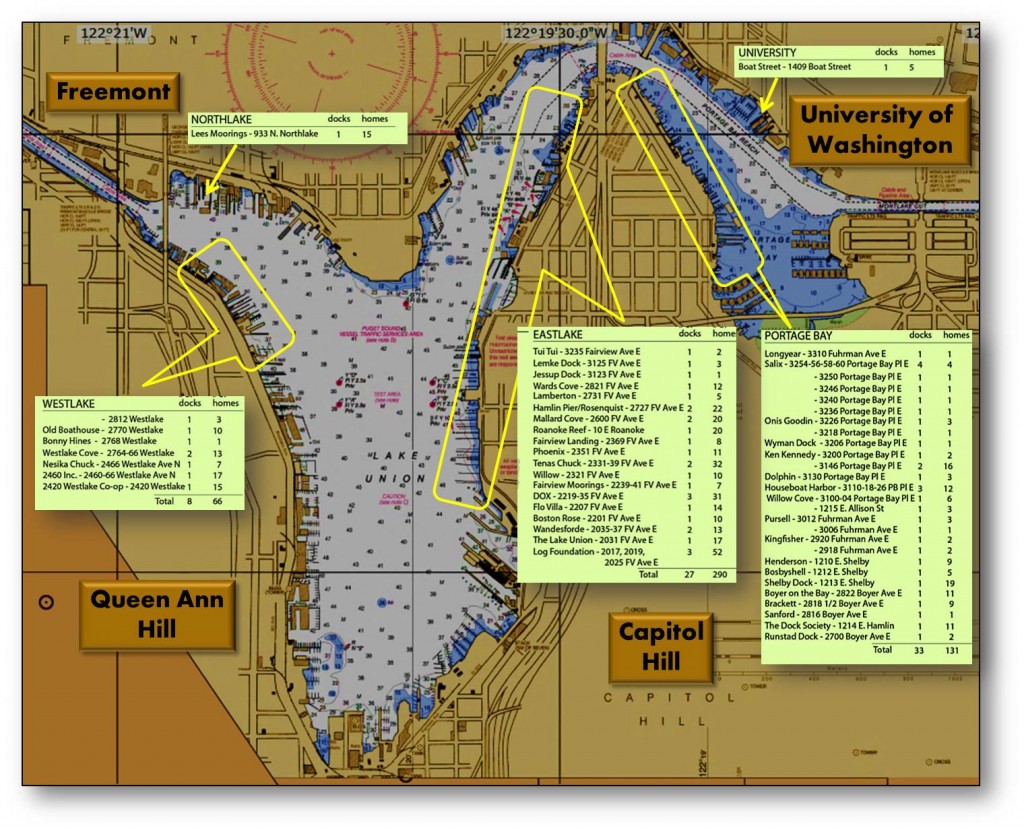Floating Homes have evolved into an integral part of each neighborhood.
There are currently 70 docks which house 507 Floating Homes
These docks are located in 4 primary neighborhoods around Lake Union. Each of the neighborhoods of Eastlake, Westlake, Northlake and the University District have their own unique character.
Over the years, most of the docks have become coops and corporations owned by the residents of each dock. They have evolved from the early days of being outcast living in over the water slums to an integral part of each neighborhood community.
While most docks are homeowner owned docks there are a few that remain rental docks where the home owner only owns the floating home and rents a slip from the marina owners.

